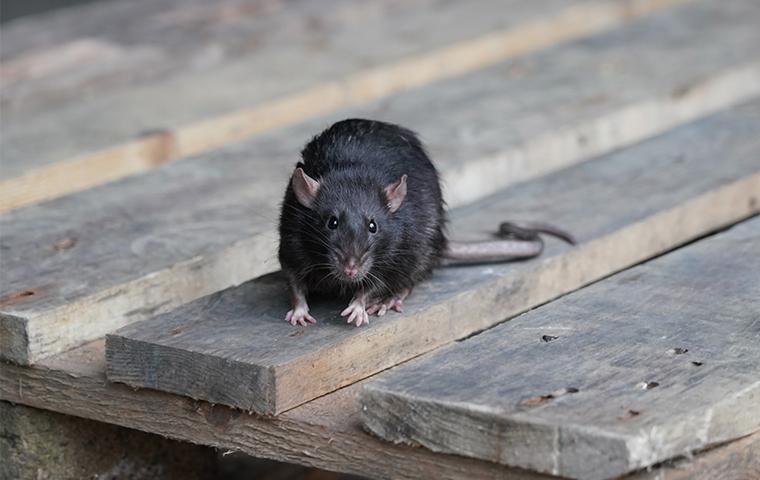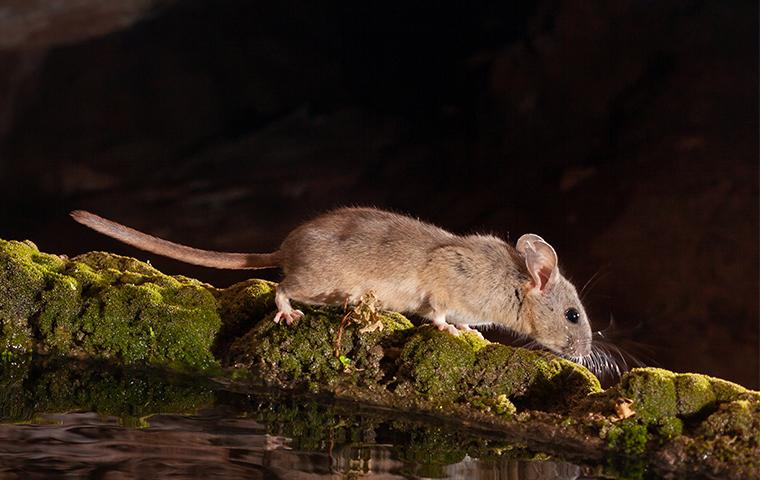
Rodents
Brief Overview of Rodents
Rodents are warm-blooded mammals that have large, continuously growing front teeth that they use for gnawing on objects. Rats and mice are two of the most common species of rodents found invading homes and businesses in Northern Texas. Both are considered to be commensal rodents; this means they are found living in close proximity to people and, over time, have come to somewhat depend on people for food, water, and shelter. These rodents in Texas, in effect, “share our table.



What Do Rodents Look Like?
Common species of rodents in Texas are typically not a concern unless they choose to make their way into your home. The most common rodents found in Texas include the house mouse, the Norway rat, the roof rat, and to a lesser extent, the wood rat.
House Mice
The most common Texas mouse found in your home is the house mouse. As an adult, this mouse is fairly small, growing to between 5 ½ and 7 inches in length, including its long tail. House mice have small, beady eyes and both their ears and their tails are covered in a light layer of velvet-like fur. The fur on their body ranges in color from grayish-brown to dark gray; their belly is usually covered in tan or off-white colored fur.
Norway Rats
There are two common types of rats in Texas: The Norway rat and the roof rat. The adult Norway rat’s “heavy” body grows to between 7 and 9 1⁄2 inches in length; the tail adds another 6 to 8 inches to their total body length. Norway rats have a rounded blunt nose, protruding black eyes, small ears, and a bi-colored tail. Their scruffy fur is brown and peppered with black hairs; the fur on their belly is lighter in color, usually gray or white.
Roof Rats
The roof rat has a light build making them excellent climbers. Unlike the Norway Rat, this type of Texas rat is often found climbing trees in order to access buildings through the roof, hence their name. Roof rats are dark brown or black with a contrasting lighter-colored underbelly. The body of the adult roof rat grows to about 6-8 inches in length; their long scaly tail adds another 6-8 inches to their total body length making this big rat larger than the Norway rat. Roof rats have a pointed nose, large ears, and large eyes.
Wood Rats
Though the wood rat exists as a rodent in Texas, it is less likely that this pest will invade your home. Typically, wood rats live in marshy or wooded areas. The most common species of woodrat found in Texas is the bushy tail woodrat or packrat which is distinguishable from other Texas rat species because of its long tail covered in a visible layer of fur. They are a larger Texas rat species. Males can grow to be over a foot in length, including the tail, and often weigh over a pound.
The wood rat has mostly grey fur on its back which blends to a tawny brown on its sides. They are known for their rather large nests built from twigs and their tendency to hoard items. As they forage for food, this packrat will also collect other shiny items that they deem valuable and store them in their cache or “midden”. The wood rat tends to keep to itself, and typically becomes a nuisance only to people who live on a farm or near uninhabited land.
Where Am I Likely to See Rodents?
Rodents enter homes and buildings searching for food, water, and shelter. House mice are often found nesting in attic spaces, behind large appliances, behind wall voids, and in crawl spaces. If out in the open, they are found invading pantry and kitchen spaces foraging for leftover crumbs and chewing through food containers. Norway rats, because of their heavy, cumbersome bodies, are typically found invading basements and first floors of homes and other buildings. Roof rats, in contrast, have a light body and are great climbers, so they are usually found invading the attic spaces and upper levels of buildings.
Are Rodents Dangerous?
Rodents aren’t known to be aggressive; in fact, they try to avoid you just as much as you try to avoid them. However, they are considered to be very dangerous when invading homes and other properties. Rodents chew constantly on things to prevent their teeth from overgrowing; this habit can cause major damage inside buildings. Rodents can chew through wires, pipes, drywall, floors, and insulation.
In addition to structural damage, they can destroy personal property like clothing, shoes, pictures, books, and furniture. Rodents contaminate food sources and food prep areas with their urine, feces, and saliva. They can introduce diseases and bacteria that can make people quite ill, including Salmonellosis and dysentery; They will also introduce parasites like fleas, ticks, and mites onto properties and inside homes.
How Do I Get Rid of Rodents?
At Adams Exterminating Company of North Texas, we have solutions to help prevent or eliminate rodent infestations. In fact, our home pest control programs include protection from mice and rats. We also offer stand-alone rodent control services for homes and can help business owners and managers rid their facilities of rodents with tailored treatment plans that may include the use of baits, traps, and simple exclusion techniques.
After inspecting your property, our professionals will work with you to formulate an extermination plan to rid your home or business of these pesky nuisances. After initial extermination, we will continue to monitor your property to ensure that you stay rodent-free. For professional rodent control in Denton, Lewisville, of the greater Dallas-Fort Worth Metroplex, contact Adams Exterminating Company today!
Helpful Rodent Articles
- Most Common Rodents In Texas
- Warning Signs North Texas Rodents Leave Behind
- Guide To Keeping Rodents Out Of Your Lewisville Home All Year Long
- Lewisville's Ultimate Rodent Prevention Handbook
- Why Can't I Get These Rodents Out Of My Frisco Home?
- Everything You Need to Know About Rodent Prevention In Frisco
- Are You Struggling To Deal With Rodents In Your Frisco Home?
- Let's Talk About Rat Control In Frisco
- A Guide To Complete And Effective Rodent Control In North Texas


